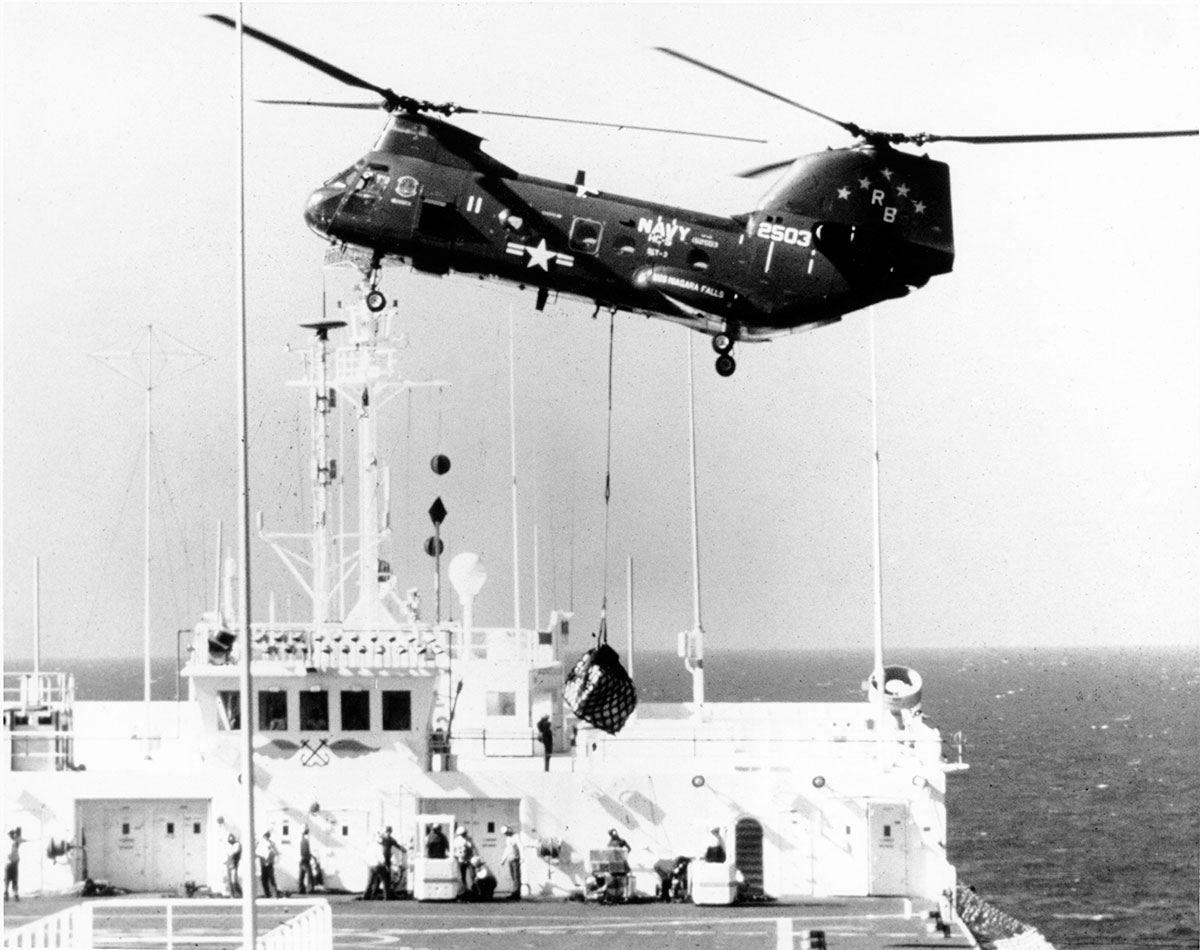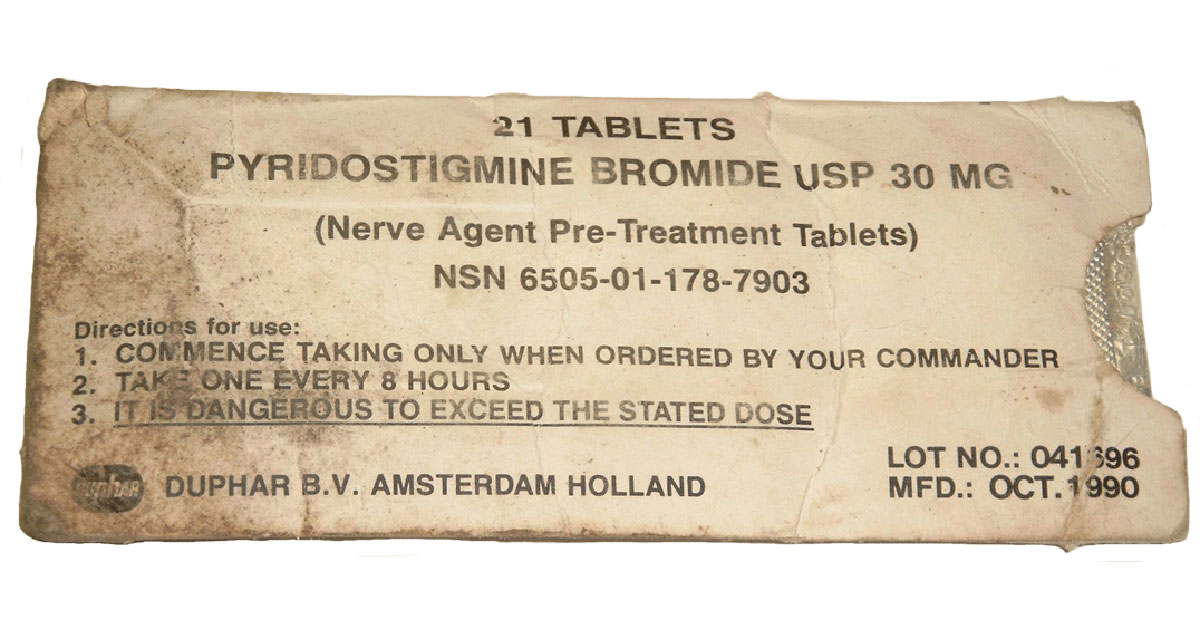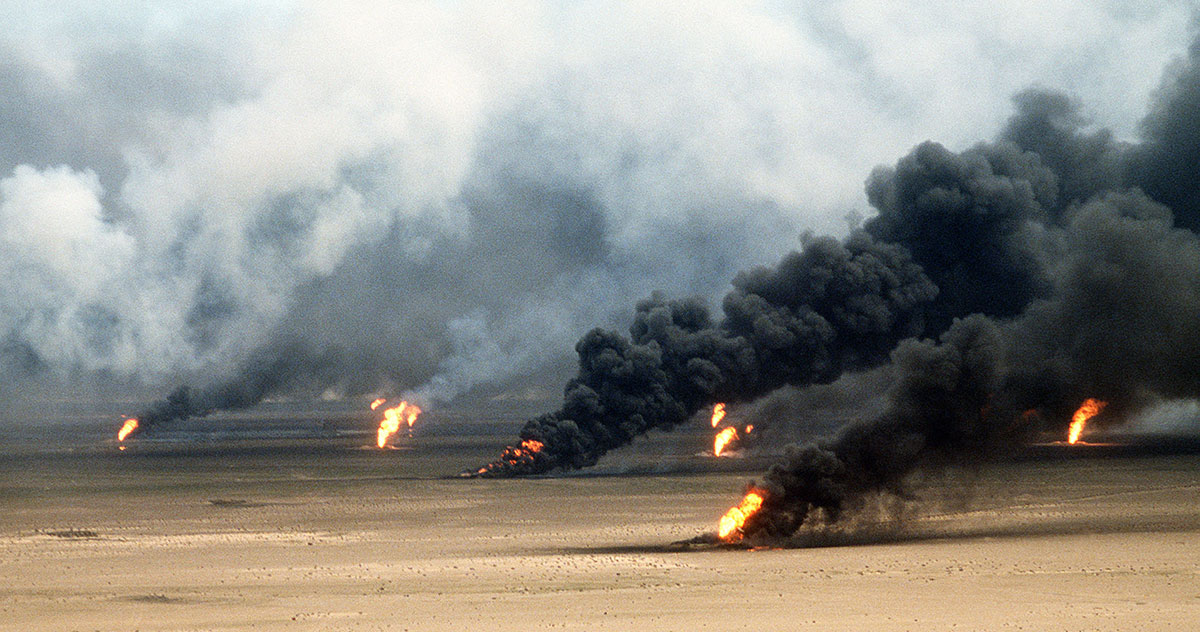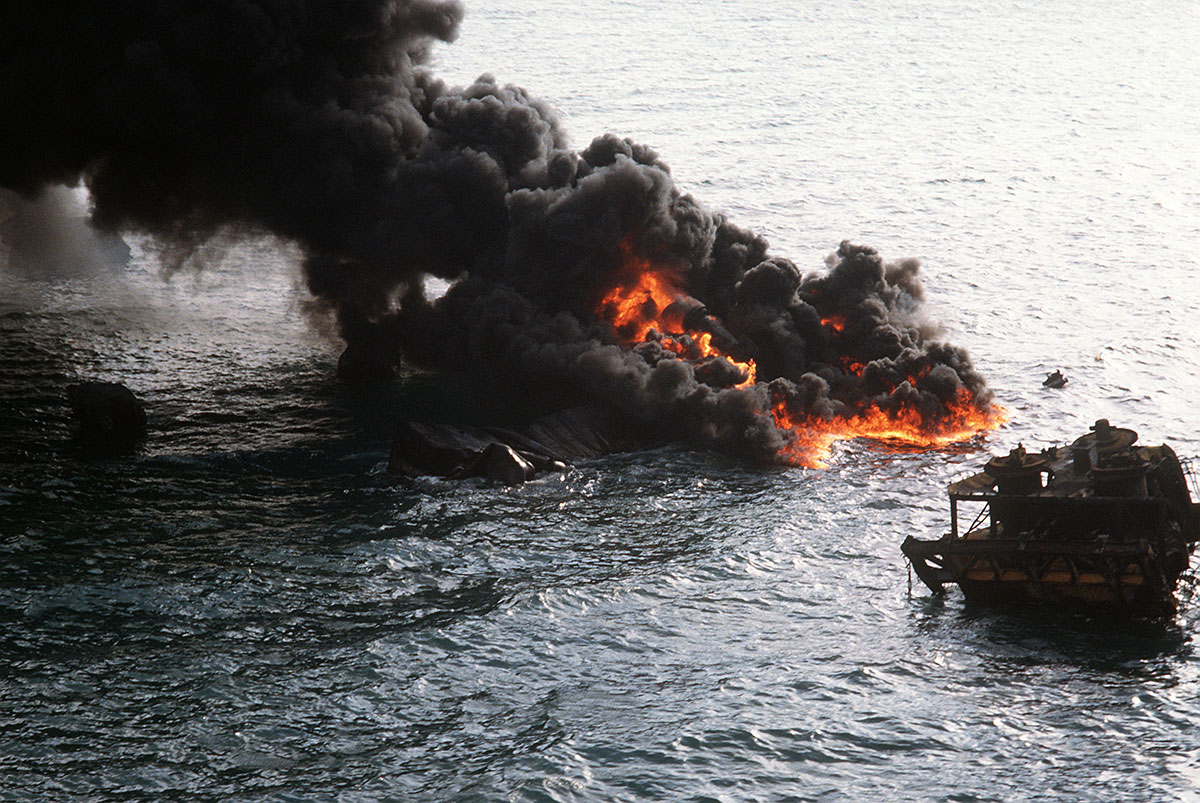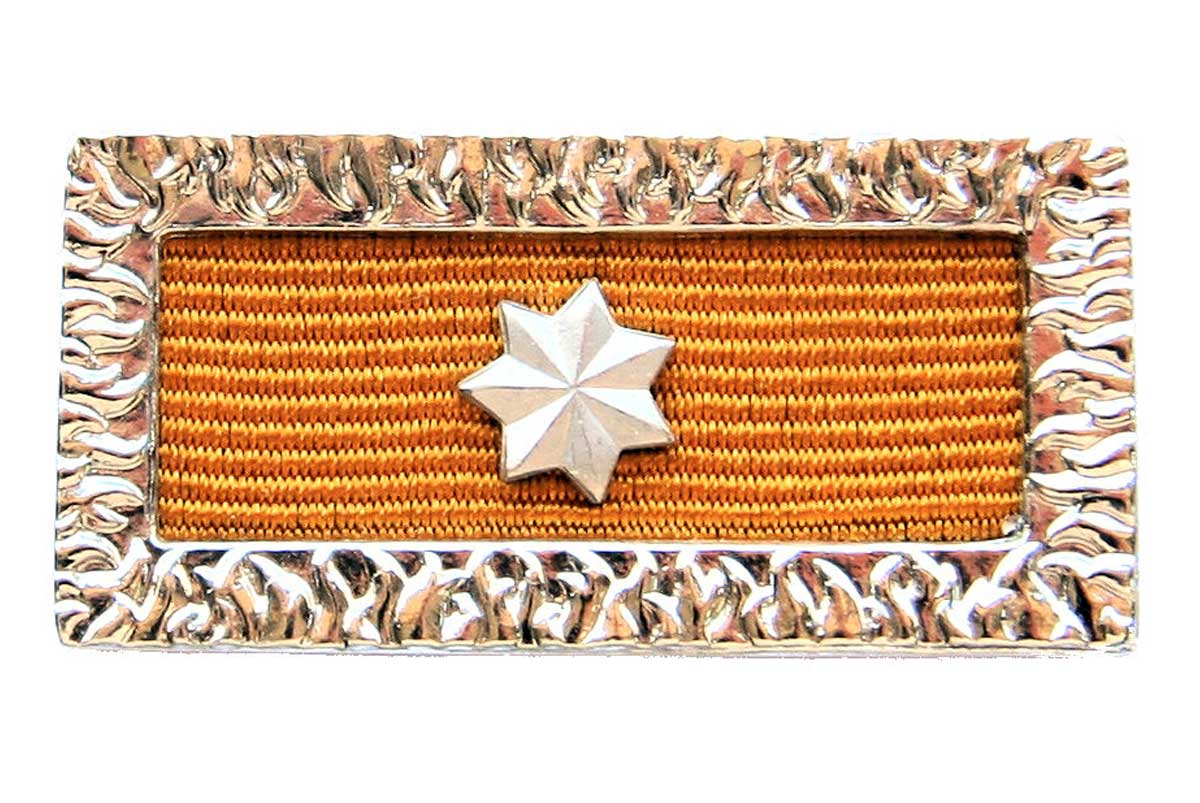USNS Comfort receiving vertical replenishment, courtesy of United States Navy Archives. Photograph by Thomas Balfour.
MICHAEL WILSON MB, BS, FANZCA
GULF WAR
When the American hospital ship, USNS Comfort set sail for the Persian Gulf, the crew included Michael Wilson, an Australian anaesthetist.
This war carried a real threat of chemical and biological weapons. Soldiers took oral pyridostigmine, and US and British troops were issued self-injectors of atropine and pralidoxime in case of exposure.
Some patients self-administered unnecessarily, mistaking symptoms of heat-stroke for nerve agent attack.
Soldiers who self-injected presented with an array of problems and the drugs interact with muscle relaxants, causing problems for anaesthetists.
Anaesthesia was planned for rapid recovery in case of evacuation. However, regional anaesthesia wasn’t common, although spinals were sometimes administered. Ketamine was available but not widely used and general anaesthesia was usually administered.
During Desert Shield, the ship received a string of patients due to accidents and casualties from the desert. During the later Desert Storm, the ship was closed down in the gulf, engulfed by toxic pollution from burning oil wells.
Pyridostigmine Bromide, courtesy of Pascal Vermeersch
Oil wells outside Kuwait City, courtesy of US Department of Defense, Photograph by Tech. Sgt. David McLeod
Black smoke pours from burning oil at an offshore oil terminal near Kuwait City destroyed during Operation Desert Storm, 05/22/1992, US National Archives
Meritorious Unit Citation Commemorative Medal, courtesy of Australian Government Department of Defence
BRIAN PEZZUTTI CSC RFD, MB, BS (Syd), FFARACS, FANZCA
GULF WAR
Brian Pezzutti was part of an Australian team assembled at short notice to replace those coming home. He was the only doctor on the team and the only person deployed as an anaesthetist.
The workload included Allied military, local military and police, prisoners of war, and occasionally local civilians.
“My deployment to the Middle East was to serve with the US Air Force at the Level 3 Hospital at Balad Air Base in northern Iraq. This facility was the largest during the second Gulf War and through which all casualties from the Middle East were flown to the US via Germany.”
The seriously wounded usually arrived en masse. There were two theatres, each with two tables. Often, all four tables worked simultaneously.
Teams of volunteers from across the base cleaned and fed patients, and maintained the hospital. They also provided fresh whole blood when supplies ran low.
The team was awarded a Meritorious Unit Citation.

